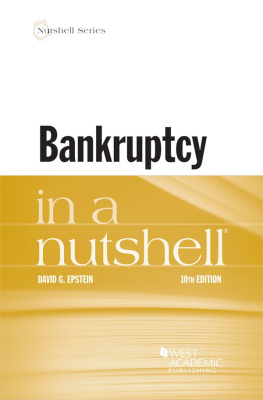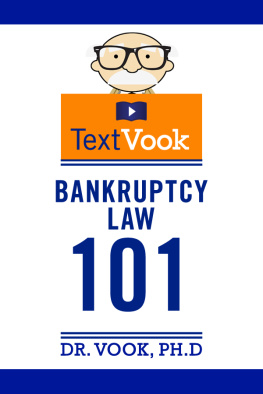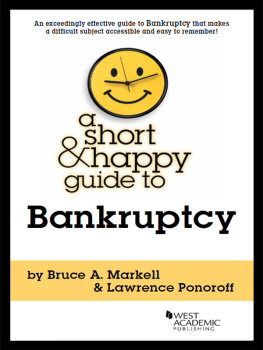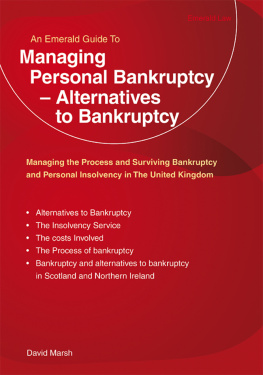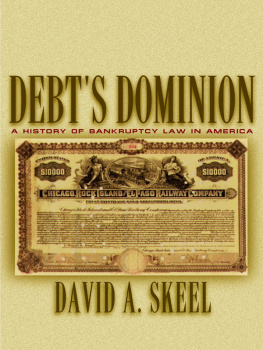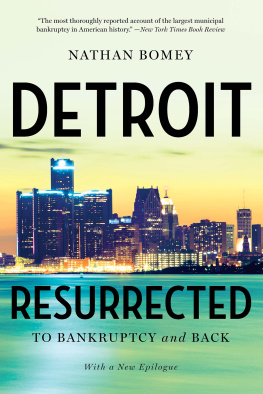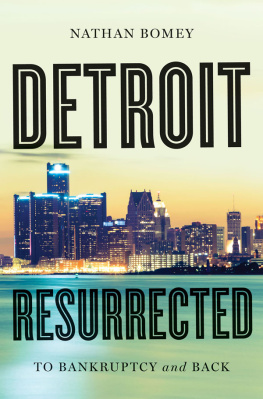West Academic Publishings Emeritus Advisory Board
Jesse H. Choper
Professor of Law and Dean Emeritus
University of California, Berkeley
Yale Kamisar
Professor of Law Emeritus, University of San Diego
Professor of Law Emeritus, University of Michigan
Mary Kay Kane
Professor of Law, Chancellor and Dean Emeritus
University of California, Hastings College of the Law
Larry D. Kramer
President, William and Flora Hewlett Foundation
James J. White
Robert A. Sullivan Emeritus Professor of Law
University of Michigan
West Academic Publishings Law School Advisory Board
Joshua Dressler
Distinguished University Professor Emeritus
Michael E. Moritz College of Law, The Ohio State University
MEREDITH J. DUNCAN
Professor of Law
University of Houston Law Center
RENE M c DONALD HUTCHINS
Dean and Joseph L. Rauh, Jr. Chair of Public Interest Law
University of the District of Columbia David A. Clarke School of Law
RENEE KNAKE JEFFERSON
Joanne and Larry Doherty Chair in Legal Ethics &
Professor of Law, University of Houston Law Center
ORIN S. KERR
Professor of Law
University of California, Berkeley
Jonathan R. Macey
Professor of Law,
Yale Law School
DEBORAH JONES MERRITT
Distinguished University Professor,
John Deaver Drinko/Baker & Hostetler Chair in Law
Michael E. Moritz College of Law, The Ohio State University
Arthur R. Miller
University Professor, New York University
Formerly Bruce Bromley Professor of Law, Harvard University
Grant S. Nelson
Professor of Law Emeritus, Pepperdine University
Professor of Law Emeritus, University of California, Los Angeles
A. Benjamin Spencer
Dean & Chancellor Professor of Law
William & Mary Law School
Bankruptcy
In a nutshell
Tenth Edition
DAVID G. EPSTEIN
George E. Allen Chair Professor of Law
University of Richmond
Richmond, Virginia

The publisher is not engaged in rendering legal or other professional advice, and this publication is not a substitute for the advice of an attorney. If you require legal or other expert advice, you should seek the services of a competent attorney or other professional.
Nutshell Series, In a Nutshell and the Nutshell Logo are trademarks registered in the U.S. Patent and Trademark Office.
COPYRIGHT 1973, 1980, 1985, 1991, 1995 WEST PUBLISHING CO.
West, a Thomson business, 2002, 2005
2013 Thomson Reuters
2017 LEG, Inc. d/b/a West Academic
2021 LEG, Inc. d/b/a West Academic
444 Cedar Street, Suite 700
St. Paul, MN 55101
1-877-888-1330
West, West Academic Publishing, and West Academic are trademarks of West Publishing Corporation, used under license.
Printed in the United States of America
ISBN: 978-1-64708-254-3
To the people teaching bankruptcy law
who make this book necessary
Preface
This is a new version of a student text that I first wrote almost 50 years ago in Chapel Hill when I was a baby professor of law in the Southern part of heaven. Since then I have taught bankruptcy or creditors rights at sixteen other law schools and worked as a lawyer on the bankruptcy team of King & Spalding and then Haynes and Boone.
More important, since the last edition there have been significant amendments to the Bankruptcy Code, major court decisions, and meaningful changes in how bankruptcy cases are done and how bankruptcy affects the way deals are done.
Like the prior editions, this book attempts to summarize bankruptcy and state debtor-creditor law. It sets out the rules, the problems, and the answers to those problems that I can answer. It does not attempt to develop the history of the law, to evaluate the law critically or to propose reform of the law. In short, I have attempted to follow Wests statement that a nutshell is a succinct exposition of the law to which a student or lawyer can turn for reliable guidance.
Relatively few cases are mentioned by name. Essentially this book contains citations only to leading, recent or illustrative cases. Virtually no secondary sources are cited. There are, however, numerous references to statutory provisionsparticularly Article 9 of the Uniform Commercial Code and the Bankruptcy Code. Provisions in both the Bankruptcy Code and Article 9 are generally referred to as section; however, the different numbering schemes of the two acts should prevent your confusing the two.
This new edition reflects the helpful suggestions of law students, bankruptcy judge clerks, and lawyers who have used prior editions of this book. Just as the first edition benefitted from the work of Pete Chastain, a North Carolina law student, this edition benefitted from the work of Diana Dominguez, a Richmond law student.
I hope this book will help you review or learn bankruptcy law. Bankruptcy law is not always easy, and this is not always an easy book. However, doing bankruptcy law is challenging, interesting and rewarding. Writing this nutshell has been all of these things. I hope that, to at least some extent, reading it is.
DGE
Richmond, Virginia
March 2021
Outline
An Overview of Judicial
Collection Law
A. What Can Creditors Do Outside of
Bankruptcy?
Creditors Judicial Remedies
Shortcomings
B. What Can a Debtor Do Outside of
Bankruptcy?
Commencement, Conversion
and Dismissal of a Bankruptcy Case
Stay of Collection Actions and
Acts
Burden of Proof in Section 362(d)
Litigation
What Is Included in the Phrase Interests
of the Debtor in Property as of the Commencement of the Case?
What Is Excluded from Property of the
Estate?
What Is the Effect of a Debtors
Contracting Away Her Exemptions?
What Is the Effect of a Debtors Claiming
Too Much Property as Exempt?
B. Which Transfers Can Be Avoided
Preferences
D. Which Transfers Can Be Avoided
Fraudulent Transfers and Obligations
f. Comparison of Fraudulent Transfers
and Preferential Transfers
g. Comparison of Section 548 and State
Law
E. Which Transfers Can Be AvoidedTransfers
Not Recorded or Otherwise Perfected
F. Which Transfers Can Be AvoidedTransfers
Not Timely Recorded or Otherwise
Perfected
G. Which Transfers Can Be Avoided
Landlords Liens
A. When Do Postbankruptcy Transfers
Happen?
B. How Does a Postbankruptcy Transfer
Happen?
C. How Does Section 549 Affect Postbankruptcy Transfers of Property of the Estate by the
Debtor?
Effect of Bankruptcy on
Secured Claims
C. Overview of Impact of Bankruptcy on
Secured Claims
Payments of Amount Equal to the Value
of the Collateral in Chapter 7 Cases and
Chapter 11 Cases
Cars and Houses in Chapter 13 Cases and Chapter 11 Cases with Individual
Debtors
D. Collection of Unsecured Claims from the
Debtor
What Property Is Distributed to Holders
of Unsecured Claims in Chapter 7
Cases?
What Property Is Distributed to Holders
of Unsecured Claims in Chapter 13 Cases
and Individual Chapter 11 Cases?
What Property Is Distributed to Holders of Unsecured Claims in Other Chapter 11
Cases?
F. Which Holders of Unsecured Claims Are
Eligible to Participate in the Bankruptcy Distribution?
a. Grounds for Disallowance in 502(b)
and 502(d)
b. Contingent Claims and 502(c) and
502(e)
Treatment of Priority Claims in 11 and
13
Leases and Executory

